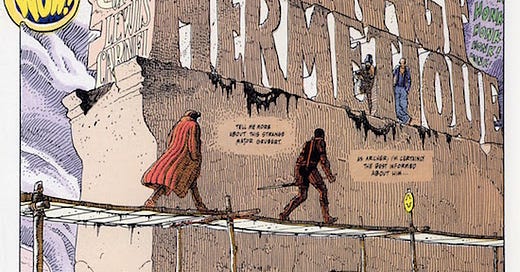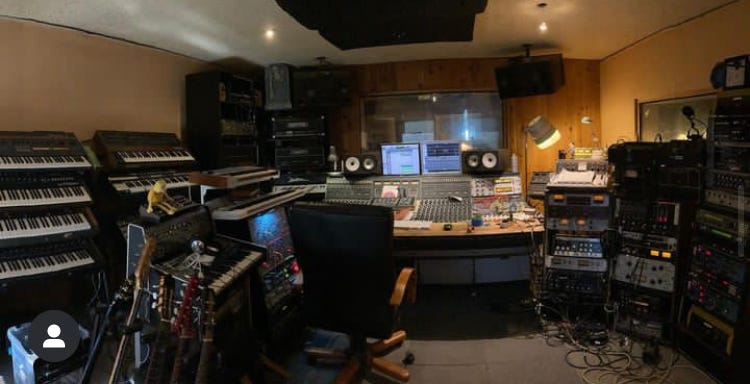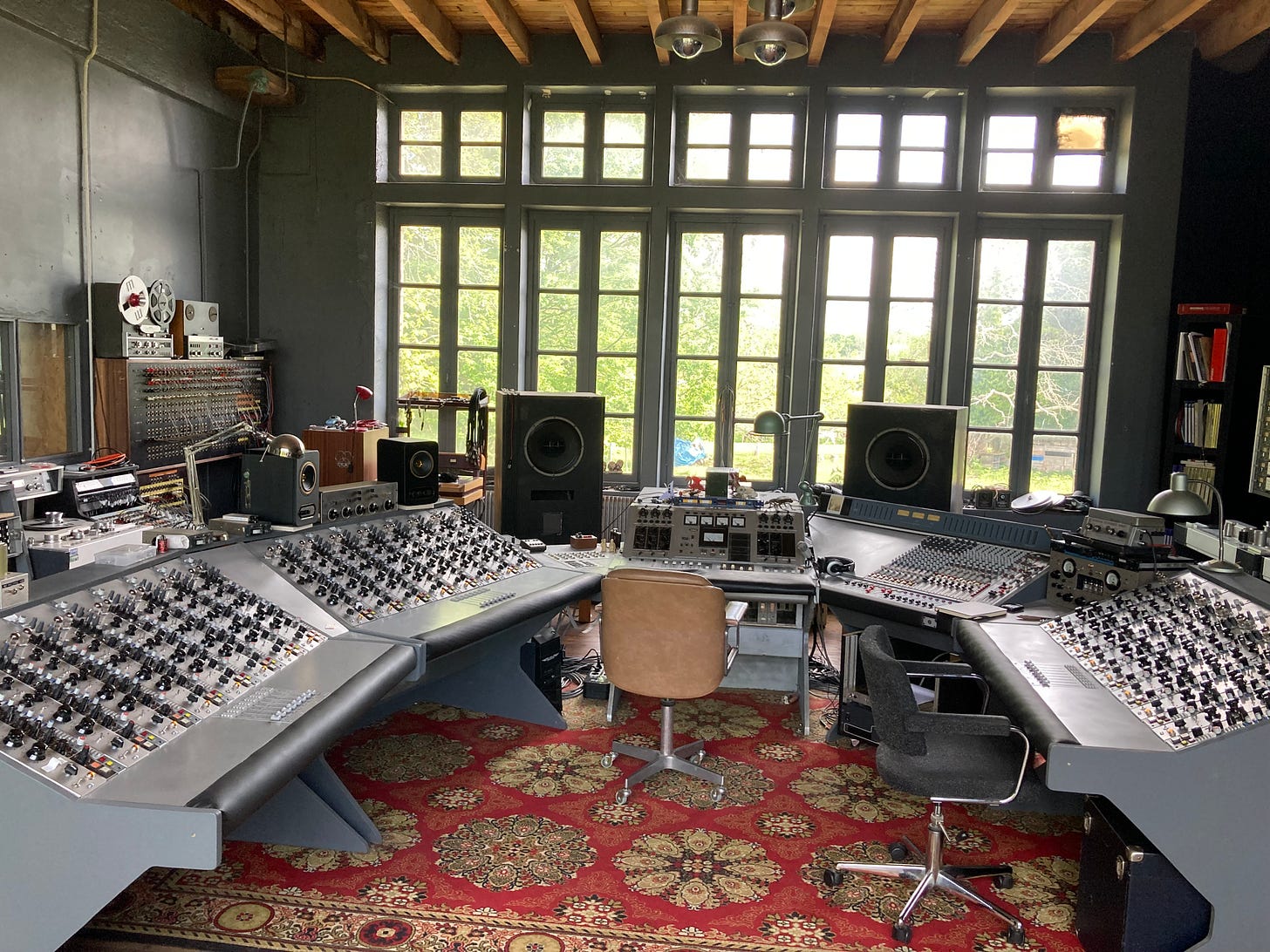Hello again, subscribers!
Last week, I talked a little about my going back to school for six months to study French language and citizenship. This week, I’d like to tell you about becoming a work experience kid again, and some fond memories I have of being a student of recording and music production.
As part of our full-time French language course, it was compulsory to find seven weeks’ worth of work placements in our particular field. The purpose of these was to practice our spoken French as much as possible and to try and make some useful contacts.
After so many years of teaching music production students, I knew finding a good placement was not going to be easy. At the same time, it might prove to be a useful test of the advice I used to give to university students looking for internships, or work experience, in recording studios.
For the first placement of three weeks, I didn’t have a lot of luck finding a spot in a recording studio, so I took one placement in a music school for two weeks and one in a music store for the remaining week (more on that in a later newsletter). At that point in my studies, I still barely spoke any French, so I just did a lot of smiling and watched as other people worked. Everyone was very patient with me, though, and my comprehension skills did improve a little.
For my second period of work placement (four weeks), I did get an offer of a couple of days at Kerwax Studio, partly, I expect, because I had already visited the studio and had made the acquaintance of the proprietors, Marie and Christophe Chavanon. More on Kerwax shortly.
Fortunately, I was able to do a live sound placement at a music venue called La Grande Ourse (The Great Bear), where I had previously worked as a volunteer for some blues shows. However, I still had a week unaccounted for, and I really wanted to do something extra-special.
While leafing through a French magazine on studios and recording, I stumbled across a feature on a studio called Le Garage Hermétique (The Airtight Garage), which really piqued my interest.
First of all, Le Garage Hermétique is the name of a comic strip by Moebius, and I figured I would get along well with someone who would name their recording studio after a sci-fi comic strip! Second of all, I saw this video of Nicolas Moreau and Pierre LeGac making a dub with old Neve 5106 console and analogue delays.
The dub starts at about 12:30, but, if you speak French, there’s some great info, in general, about analogue delays.
Getting a placement at Le Garage Hermétique wasn’t quite as simple as I’d expected. For one thing, it was in Rezé near Nantes (about 3 hours drive away from where I live), so I couldn’t just swing by. However, I thought I would shoot my shot, so I sent them a CV and covering letter… and crossed my fingers.
To my surprise, I did get a response from the chief engineer at the studio, Pierre LeGac. In his email, he suggested that we arrange a telephone meeting to discuss the possibility of my spending some time in the studio. I’ll be honest, this did terrify me a bit! I hate speaking on the phone, at the best of times, but it is 100 times worse in French, as I don’t have all those visual cues that are so useful when operating in a foreign language. As it happens, I managed to struggle through the phone interview, and Pierre suggested I come down to visit the studio to see how we all got along.
So, that’s what I did. A couple of days later, I jumped into the car, very early in the morning, and drove to Rezé, spent a few hours watching Pierre work and made sure I didn’t get in the way, too much. At the end of the day, Pierre invited me to come back and spend a week with him as part of my work placement. Result!
Le Garage Hermétique is a real Aladdin’s cave of quirky instruments, classic analogue gear, Ondes Martenots, mellotrons and synths with a lovely-sounding, classic Neve 5106 console at its heart.
The workflow of the studio is most definitely a hybrid one. All the modern tools, such as Pro Tools, Melodyne, etc. are put to great use, but that Neve console and those preamps really put an unmistakable sonic stamp on everything. The MCI JH-24 multi-track tape machine is put to use where the mellowing of transients and saturation matter the most, like on the rhythm tracks of this Lowland Brothers album that was recorded while I was there.
At the end of my week at Le Garage, I was very flattered when Nico and Pierre declared me “part of the family” and invited me to call in whenever I liked. I guess I did something right.
Kerwax Studio was my next placement, and takes things a step further in the analogue direction. Recording at Kerwax is not for the faint-hearted, or the poorly-rehearsed. It’s an all-analogue studio where you are recording straight to 24-track tape, warts and all.
As a “stagiaire” or work experience student, I was able to be present for a couple of recording sessions at Kerwax. I didn’t do a huge amount at these sessions, other than set up a few mics on the grand piano, but I did get to observe Christophe’s workflow, from which I learnt much in a short period of time. I was also delighted to be invited back for another session, but this time as an official tape op. More about this in the future, but here’s a teaser.
I’m going to talk about Kerwax more in the next edition (if you can’t wait, you could go to my blog and read a little about a session I worked on, there), but I wanted to reflect a little on my major takeaways from these two work placements.
Bravery and decision-making. These are the things that were really hammered home to me at both Le Garage Hermétique and Kerwax. I have always known the importance of these things, but somehow in this age of unlimited takes, take-comping and vocal tuning I had allowed myself to forget. With Christophe’s fully-analogue approach, the option of digital jiggery-pokery is taken out of the question, but I also noticed Pierre taking a similar approach, even in Pro Tools. If a take isn’t right, delete it. Don’t keep kicking the can of decision-making down the street; make it in the moment and stick to it.
Bravery and decision-making are at the top of my agenda now, and, if I ever allow myself to forget that, I give you permission to kick me in the backside.
The Madeleine
Hanging out at Kerwax and learning from someone like Christophe really took me back to studying recording at the University of Salford as a mature student. Although many commercial studios had gone digital by this time, the Salford studios were still analogue (and to this day, a strand of analogue principles is kept alive there to encourage good practice).
When I was a student, obsessed with jazz and the British Folk revival, I was taught by a fabulous educator called Bill Leader. I loved Bill’s classes. They were very thorough and progressed quite slowly, but one had the feeling that you were really learning.
One day, Bill was telling us some anecdote about recording a famous acoustic musician, and the penny dropped for me.
“Are you that Bill Leader?”, I asked.
“Oh, yes,” he responded casually.
That Bill Leader was the man who recorded some of the most influential folk and acoustic records of all time.
At that age, I was a worshipper of Bert Jansch and Pentangle, so Bill instantly went from being “a great teacher” to an absolute hero of mine. Every week, I would question him about the many legends that had grown up around Bert Jansch, John Renbourne, etc. Often, he would correct the legends somewhat, but the real story was always just as good, or better.
I actually still have a recording assignment that was set by Bill. In those days, few people had home studios, so the whole thing was probably recorded in a three-hour session and then mixed in another three-hour session. Compared to what students could do today, it doesn’t really stand up. However, I did have to be brave and make decisions. I even have Bill’s feedback. This is my favourite bit.
“Your readiness to include the whole of both sax takes shows that you are not a timid worker. Competence and boldness are two excellent attributes to bring to your work”.
Bill is in his 90s, now, and I was in touch with him after my placement at Kerwax. I wanted to tell him how much he had inspired me and how I still put into practice every day so many of the things I had learnt from him.
Thank you, Bill!
If you want to find out more about Bill, there is currently a ten-volume set of books in progress about his life and works. The first volume is Glimpses of Far off Things: 1855-1956.
And now, the end is near…
Well, that about wraps up this edition. Thanks for spending some time with me.
For the time being, From The Devil’s Coach House will be fortnightly. If you are enjoying my scribblings, please feel free to send them to your friends. If you feel the urge, please add a comment, as I’d love to hear what you think, so far. I’d also be keen to hear about what you would like more of, so pop those ideas in the comments, too.
Thanks, again, and stay noisy!!!
Steve









Wow, goosebumps. What a brilliant post.  I’m finding it difficult for me to contain my jealousy for your incredible learning experiences in such beautiful environments.  What a blast. And to think how much fun digital delay has taken out of certain processes. :-)Thanks also for sharing the music videos . Keep up the great work!